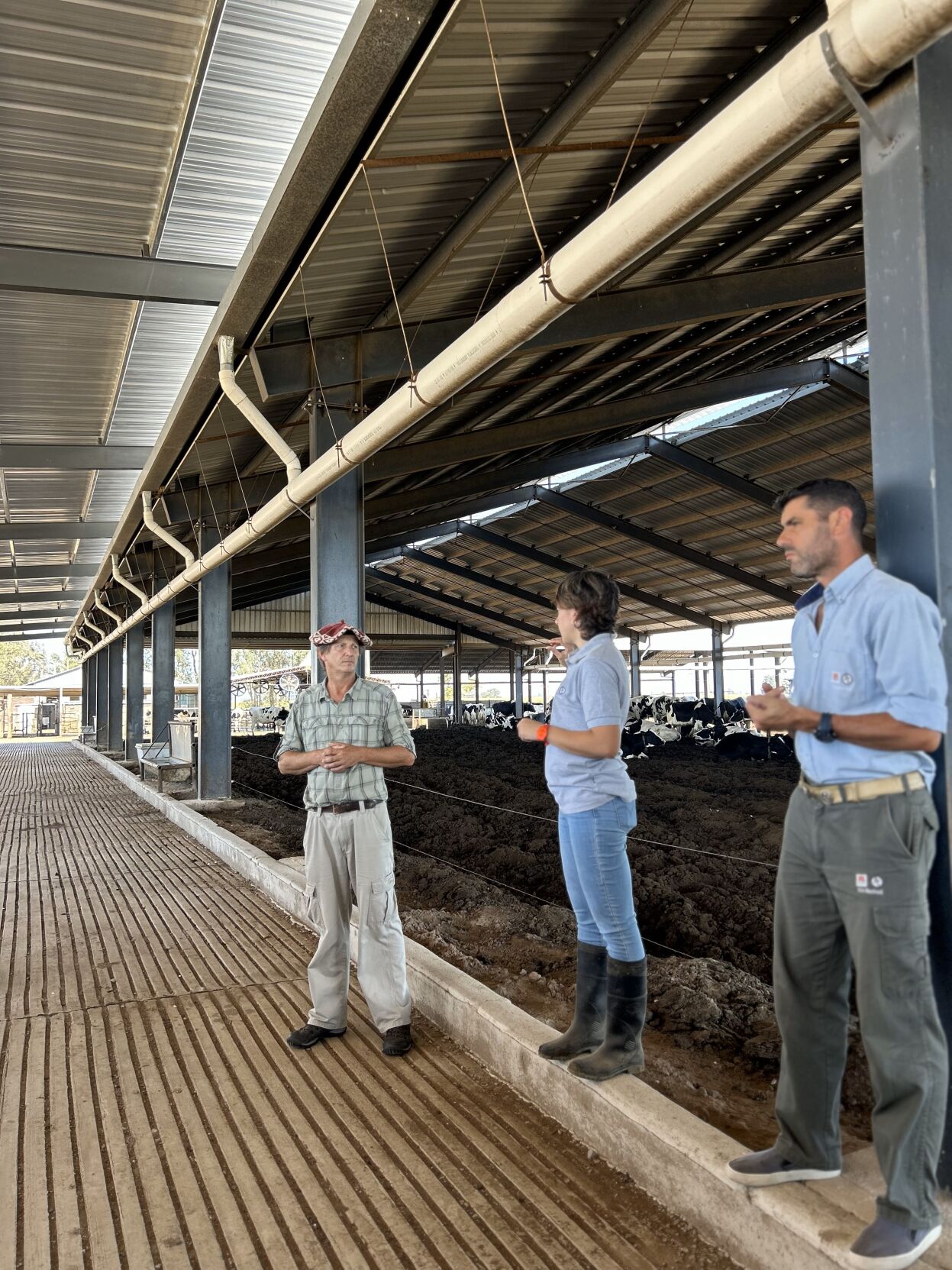As the hot summer sun radiated across the plains, fields of soybean variety trials waved in the wind.
It’s not an American university extension research farm, but one could be forgiven for thinking it was.
The soybeans were growing at Argentina's National Agricultural Technology Institute (INTA) facility, part of Argentina’s Secretariat of Agriculture, Livestock, Fisheries, and Food of the Ministry of Economy and Production.
Tri-State Neighbor assistant editor Melisa Goss had the chance to visit and tour the research site near Manfredi, Argentina, on an agri-tourism trip with South Dakota Agricultural and Rural Leadership (SDARL) program.
INTA is made up of 15 regional centers, six research centers specializing in areas such as agro-industry, natural resources and family farming, 53 experimental stations, and over 300 extension units. This large network ensures that INTA’s initiatives are both locally relevant and nationally coordinated, an INTA representative told the South Dakota visitors.
During the tour, a key focus was irrigation research. INTA is conducting experiments on drip versus conventional irrigation, sensor-based soil moisture monitoring, and alternative water sources. With Argentina’s diverse climate and varying water availability, these studies play a vital role in developing sustainable agricultural practices for the future, the representative said.
Another major area of research at INTA involves no-till farming and crop rotations. For nearly 30 years, scientists have been analyzing the long-term effects of different crop rotations, cover crops, and tillage methods on soil health, water retention and overall productivity.

Agri-tour translator Axel Von Martini, left, and two INTA dairy researchers share information about their studies and operations with South Dakota Agricultural and Rural Leadership members during a February visit.
Researchers are gaining insights into how various farming techniques influence yields and sustainability, underscoring the importance of soil conservation in modern agriculture. The findings align with conservation efforts in the U.S., reflecting a shared global commitment to responsible land management, the representative said.
Beyond large-scale field trials, INTA is also conducting research on smaller experimental plots and managing a 300-head dairy operation. Studies focus on optimizing feed efficiency, herd health and production methods, further demonstrating the role of data-driven innovation in addressing today’s agricultural challenges.
In response to the global shift toward precision agriculture, INTA has been at the forefront of integrating advanced technologies such as sensors, GPS, satellite imagery, data analysis and automation, the INTA representative said.
These tools optimize input usage and enhance yields. For instance, precision agriculture has been shown to increase corn yields by 10% to 20% and soybean yields by 5% to 15%, attributed to improved nutrient management, efficient water use and precise pest control.
INTA’s commitment to cutting-edge biotechnology was evident through its modern laboratories focusing on genetic improvement and the development of specific crop traits.
Research areas include the genetic enhancement of cereals, fruits, flowers, forest trees and vegetables, as well as the management of native forests. Pest, disease and weed control are also high priorities for INTA, the representative said.
Beyond research, INTA places a strong emphasis on education and capacity building. The institute offers various training programs and workshops to bolster knowledge and best practices to farmers, agronomists and other stakeholders.
This educational outreach ensures that technological advancements and research findings are effectively translated into practical applications that enhance the productivity and sustainability of Argentina’s agricultural sectors.
Despite its successes, INTA faces challenges common to many public research institutions, such as securing consistent funding and adapting to rapidly changing technological landscapes, the representative said.
However, the institute’s strategic vision includes strengthening partnerships with private sectors, enhancing its focus on climate-resilient agriculture, and continuing its commitment to sustainable practices, the representative said.
Melisa Goss, Assistant Editor for the Tri-State Neighbor, is a South Dakota farm girl whose love of travel has allowed her to see ag’s vital impact around the world, from America’s heartland to the rice paddies of Southeast Asia and many places in between. She makes her home in Hartford with her husband, daughter and miniature schnauzer. You can reach her at mgoss@lee.net.












